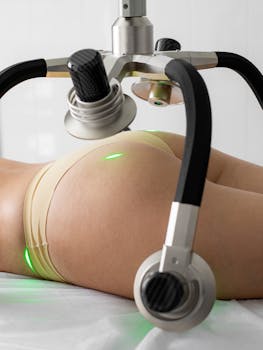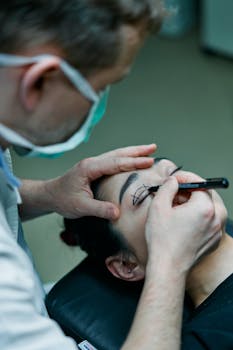If you’re researching asian eyelid surgery cost, this guide breaks down typical prices, what affects them, and how to plan for surgery safely and realistically. Costs vary widely depending on technique, location, surgeon experience, and whether you choose a non-surgical or surgical approach. Understanding terminology, common price ranges, and recovery expectations helps you make an informed decision rather than choosing based on price alone.
Asian eyelid surgery costs: what to expect
Commonly called double eyelid surgery or blepharoplasty in East Asian patients, procedures range from simple suture techniques to full incisional lifts. Average asian eyelid surgery price in the United States often spans from a few hundred dollars for minimal outpatient suture methods to several thousand dollars for full incisional surgeries performed by board-certified plastic surgeons. Internationally, korean eyelid surgery cost may be lower in South Korea, but differences in standards, aftercare, and travel expenses must be considered.
Types of procedures and typical price ranges
- Non-incisional (suture) double eyelid creation: Often advertised as less invasive, recovery can be quicker. Non incisional double eyelid surgery cost typically ranges from a few hundred to a couple thousand dollars depending on clinic and location.
- Partial incisional methods: A middle-ground approach; prices are usually higher than suture-only techniques and reflect operative time and anesthesia.
- Full incisional double eyelid surgery: Performed when excess skin or fat is removed; this is commonly the most expensive option, reflecting operating room fees and surgeon expertise.
- Revision surgeries: If you need corrections later, expect additional costs that can exceed initial prices, especially for complex revisions.
Factors that influence the final price
Several variables determine the final asian eyelid surgery cost: surgeon credentials and demand, geographic location (urban centers and specialized clinics tend to charge more), anesthesia and operating room fees, pre- and post-operative care, and whether additional procedures (like fat removal or ptosis repair) are included. Travel and accommodation should be factored in if considering international options like clinics in South Korea.
Understanding the difference between price and value
Choosing the lowest asian eyelid surgery price can be tempting, but it’s important to weigh safety, outcomes, and follow-up care. A more experienced surgeon or certified clinic may charge more but provide better aesthetic outcomes and lower complication rates. Ask to see before-and-after portfolios, verify board certification or specialist training, and confirm what is included in quoted fees (consultations, follow-up visits, revision policies).
Recovery, risks and aftercare costs
Recovery timelines vary by technique; non-incisional approaches often have shorter downtime but may have a higher chance of loosening over time, potentially requiring further treatment. Full incisional procedures have longer swelling and healing but tend to yield more permanent results. Budget for prescription medications, follow-up visits, and potential scar care. If complications arise, corrective procedures add to the total expense.
How to budget and finance surgery
Many clinics offer financing plans or partner with medical lenders. Create a realistic budget that includes surgeon fees, facility charges, anesthesia, aftercare, and contingency funds for revisions. Consult multiple providers to compare quotes and ask for itemized estimates. If you are exploring international clinics for a lower korean eyelid surgery cost, include travel insurance, recovery stay costs, and the logistics of follow-up care back home.
For a concise overview of the anatomical goals and cultural context behind double eyelid procedures, see this educational page: Double eyelid (Wikipedia).
Cosmetic decisions intersect with health and identity. Discuss realistic goals and any functional concerns—like vision obstruction—during consultation so the chosen approach aligns with both aesthetic and medical needs. If you want to explore complementary skin-care advances that support healing and scar minimization after surgery, consider reading this resource: descriptive anchor text.
Practical tips before booking
- Get at least two itemized quotes and ask about what happens if revision is needed.
- Check reviews, qualifications, and before/after photos from the specific surgeon, not just the clinic.
- Clarify whether quoted prices are all-inclusive (anesthesia, facility, follow-up) or estimates subject to change.
- Consider waiting for consultations to evaluate both aesthetic goals and health suitability for surgery.
- Takeaways:
- asian eyelid surgery cost varies widely by technique, surgeon, and location.
- Non-incisional options usually cost less but may require future touch-ups.
- Factor in anesthesia, facility fees, aftercare, and potential revision costs when budgeting.
FAQ — Do I need to travel for a better price?
Traveling can reduce the base surgical fee in some countries, but total costs may rise once travel, accommodation, and follow-up logistics are included. Prioritize safety and verified credentials over price alone.
FAQ — How long do results last for non-incisional methods?
Non incisional double eyelid surgery cost is often lower, but the longevity can be shorter than incisional methods; some patients experience loosening over years and may seek revision. Discuss expected durability with your surgeon.
FAQ — Are there non-surgical alternatives?
Temporary cosmetic options like adhesive strips or makeup techniques can simulate double eyelids without surgery. These carry no surgical risk but are not permanent and won’t address anatomical concerns that surgery can correct.






